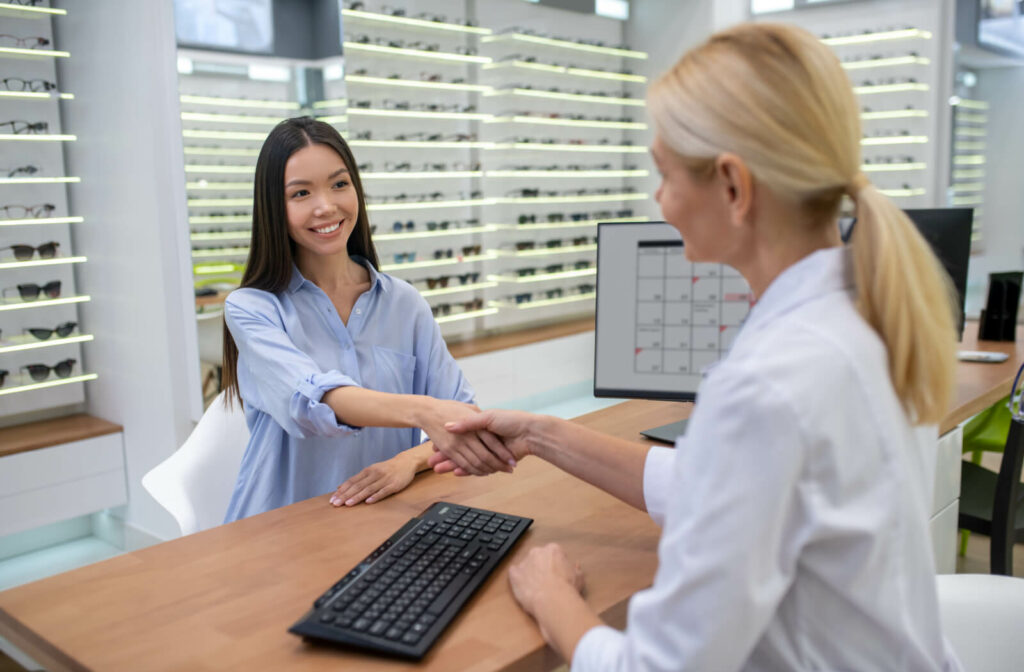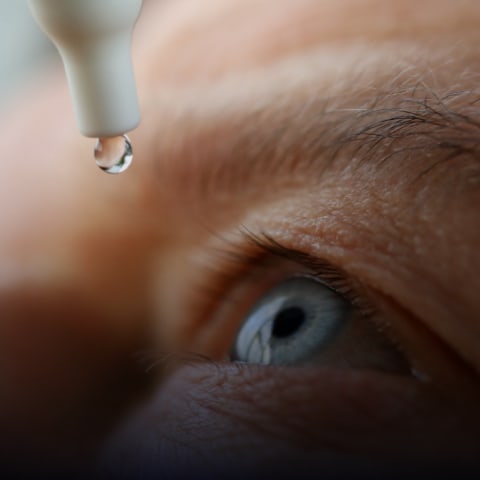Eye exams are a critical piece of your healthcare regimen. Your optometrist can be a valuable member of your healthcare team who can help detect eye diseases and other health conditions, like high blood pressure and diabetes.
As life gets busy, it’s normal to start cutting nonessentials out of your schedule, but your eye exam should stay on your calendar. Most comprehensive eye exams last from 30 minutes to an hour but can take longer depending on your specific eye concerns or medical history.
At Bonavista Eye Care, our optometrists perform thorough exams, thoughtfully answer your questions, and strive to respect your time, so you can get back to doing what matters most to you.
What Tests Are Included in an Eye Exam?
While eye exams can vary based on your eye health history, medical conditions, and specific concerns, most comprehensive eye exams follow a basic blueprint, including a few fundamental tests.
Visual Acuity Tests
Using one of the most recognized pieces of testing equipment, the Snellen chart, a visual acuity test measures how clearly you can see images, letters, and details at a distance. Your optometrist can use a visual acuity test as one of several methods for determining how your vision has changed between eye exams.
To perform the test, you’ll read the chart out loud using both eyes and then again, one eye at a time. A similar chart of pictures can be used in children’s eye exams for those just learning or struggling to read.
Your visual acuity test results are measured in a fraction, with one of the most recognizable results being 20/20. If you can stand 20 feet away and read the chart without corrective lenses, that can be a sign you have 20/20 vision.
Refractive Error Tests
If you’re struggling with headaches, blurry vision, eye strain, or squinting, that may be a sign of a refractive error your eyes are trying to accommodate. Refractive errors are relatively common and include:
- Nearsightedness (myopia)
- Farsightedness (hyperopia)
- Astigmatism
- Presbyopia
Your eye doctor can use refractive tests to determine whether you need glasses or contacts for the first time or an updated prescription. With an updated focusing power on your lenses, your new glasses or contacts can help sharpen your vision.
Retina Exam
During a retina exam, your optometrist can evaluate the health of your optic nerve, macula, and retina at the back of your eye. Imaging of your eye’s structures may be taken to record changes in your eye and detect specific health problems, such as macular degeneration or diabetes.
Slit Lamp Test
A slit lamp exam uses a microscope and light to help your optometrist assess the structures in your eye, including your:
- Optic nerve
- Retina
- Cornea
- Sclera (the whites of your eye)
- Iris (the coloured ring in your eye)
- Lens
- Conjunctiva (the clear membrane over your eye)
- Eyelids
As a diagnostic tool, a slit lamp test can help detect eye conditions like cataracts, retinal detachment, macular degeneration, and problems that affect blood vessels.
Intraocular Pressure Test
A rise in intraocular pressure (IOP) can be related to the development of glaucoma, a group of disorders that can cause lasting damage to your optic nerve and eventually lead to vision loss.
Glaucoma has virtually no observable symptoms until vision loss occurs, so regular eye exams are critical for monitoring your eyes’ IOP, especially if you have a family history of glaucoma.
A tonometry test can help determine your IOP, but further tests may be required to confirm a diagnosis of glaucoma, including:
- Visual field testing to evaluate your peripheral vision
- Optical coherence tomography (OCT) to detect changes in your optic nerve
- Pachymetry to measure your cornea’s thickness

When Is it Time for the First Eye Exam?
You may be surprised to learn that children should have their first comprehensive eye exam between 6 and 9 months. This baseline exam is an important part of monitoring your child’s eye health and provides an opportunity for our optometrists to start assessing their eyes early and monitor changes as they grow.
Children should have their second eye exam between the ages of 2 and 5 and then another exam annually once they reach school age. In their preschool years, we can detect the presence of amblyopia (lazy eye) and strabismus (crossed eyes) and begin corrective treatment.
Children’s eyes can change rapidly as they grow, and since many refractive errors, such as myopia (nearsightedness), first develop in childhood, it’s vital to assess their eyes and vision regularly.
Routine & Walk-In Eye Exams
Regular comprehensive eye exams for your whole family can help keep everyone’s eyes and bodies healthy. Whether you need a new prescription, want to try contact lenses for the first time, or are concerned about your eye health, visit Bonavista Eye Care to get comprehensive, personalized eye care that can meet your needs.


































